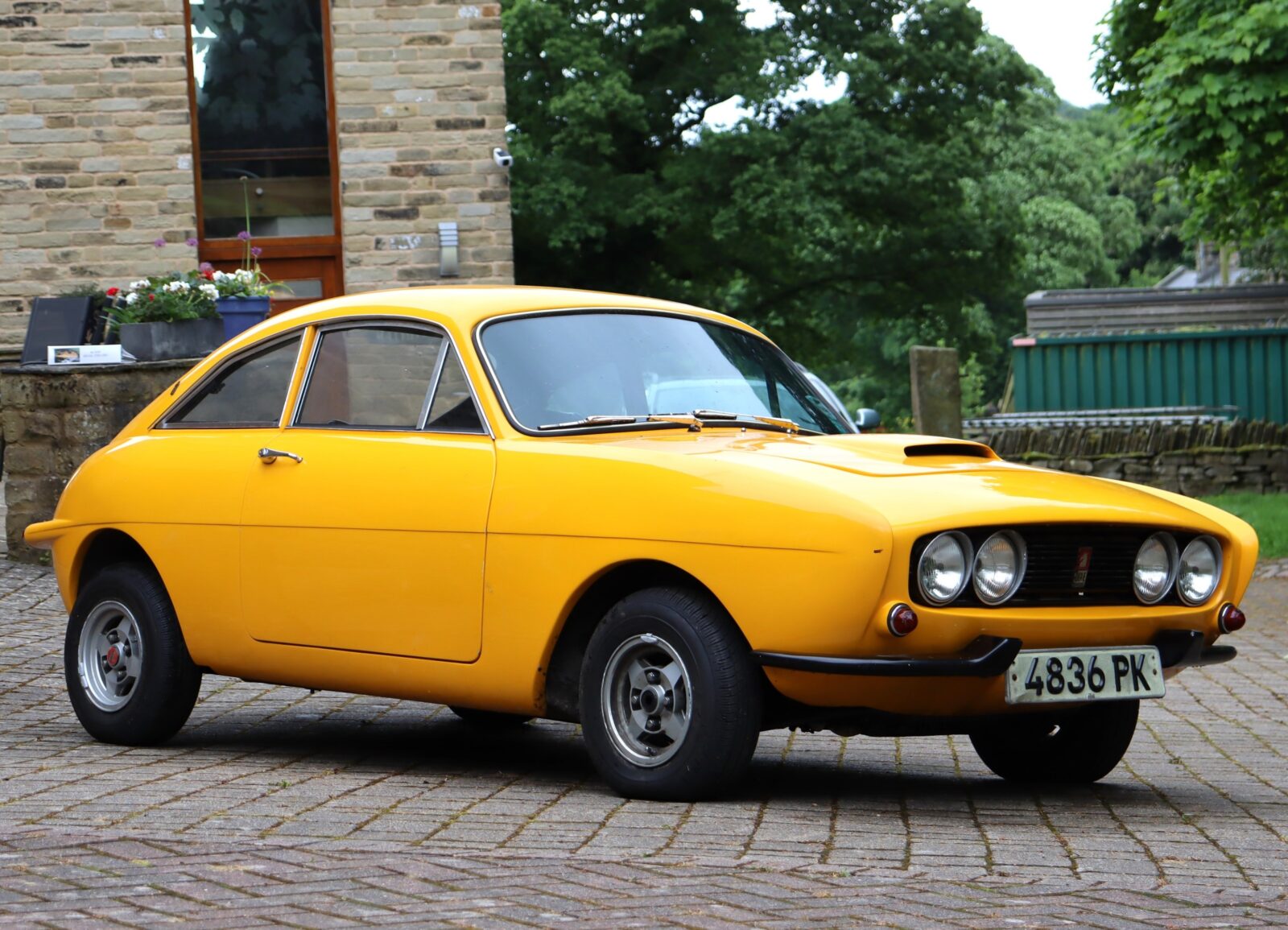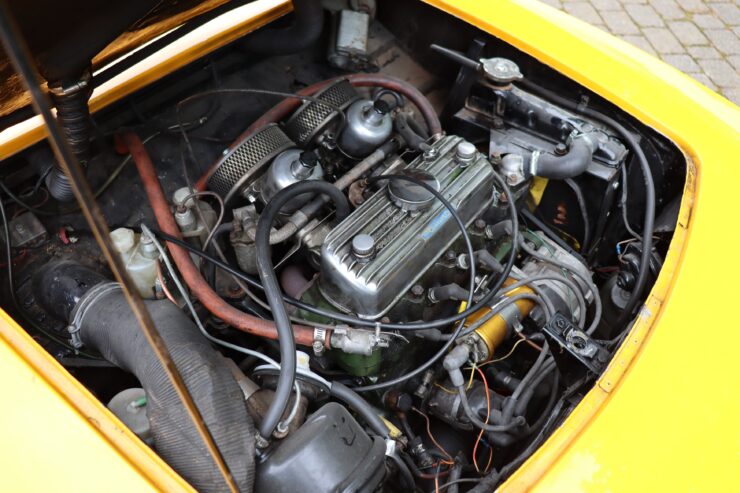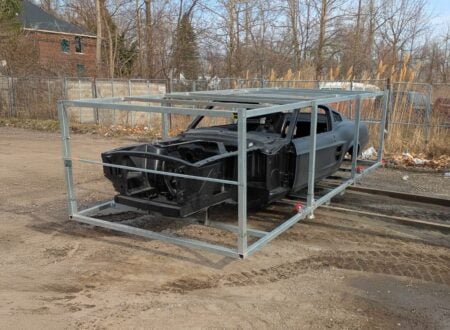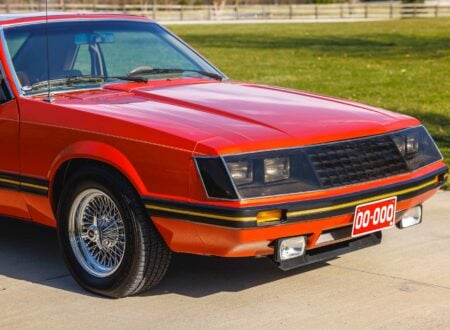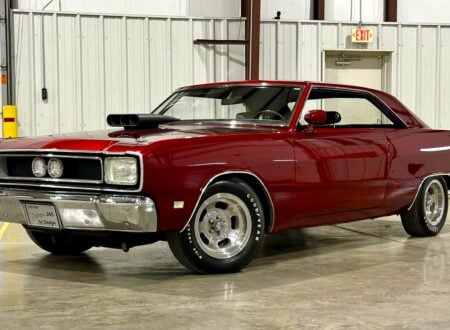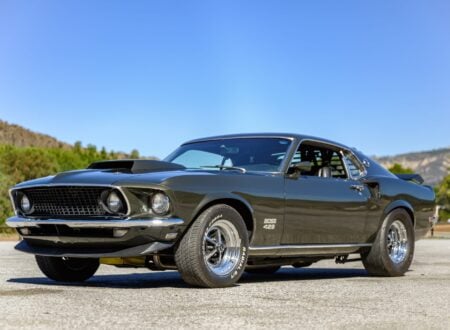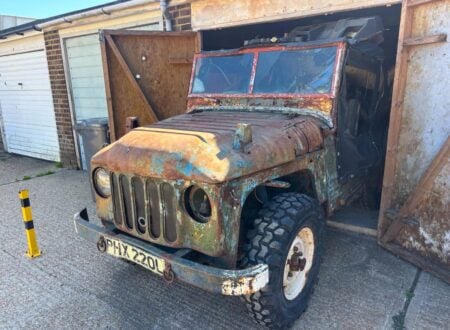This is an Ogle SX1000, it’s a rare British sports car with just 66 made in total, sharing the same underpinnings as the Mini but with a new body designed by English industrial design legend David Ogle.
David Ogle was a Supermarine Seafire pilot during WWII. He would found Ogle Design in 1954, and in the 1970s it would be Ogle Design that would build Luke Skywalker’s XP-34 Landspeeder based on a Bond Bug three-wheeler car.
Fast Facts – The Ogle SX1000
- The Ogle SX1000 was a rare British sports car based on the Mini platform, with only 66 units produced. Designed by David Ogle, a former WWII pilot and founder of Ogle Design, it featured a fiberglass body on an extended Mini Van chassis. Initially, customers supplied donor cars for conversion, but later, Ogle secured new components from BMC to build complete vehicles. The car’s name cleverly incorporated the engine size and a subtle nod to sex appeal.
- Tragically, David Ogle died in a car accident in 1962, shortly after which production of the SX1000 ceased. However, Ogle Design continued under new management, notably contributing to iconic designs like the Raleigh Chopper bicycle, BSA Rocket 3 motorcycle, and various cars including the Reliant Robin. Perhaps their most famous creation was Luke Skywalker’s XP-34 Landspeeder for “Star Wars: A New Hope,” built using a Bond Bug three-wheeler as a base.
- The featured 1962 Ogle SX1000 is the sixth unit produced and is believed to be the 1962 New York International Auto Show car. It has some unique features, including a hood air intake and electric windows. Performance was improved by boring-out a 1275 Cooper S engine then adding with twin SU carburetors and an oil cooler. Finished in yellow with alloy wheels and a black vinyl interior, it represents an unusual piece of British automotive history.
- The Ogle SX1000 was part of a unique class of custom vehicles based on the Mini platform, which featured a transversely-mounted engine driving the front wheels. This layout became influential in compact car design worldwide. The Mini’s modular front-end assembly, including engine, transmission, suspension, and brakes, could be easily repurposed for other vehicles, inspiring various creative adaptations in Britain’s thriving garage-based car culture.
Building The Ogle SX1000
The Ogle SX1000 was a member of a unique class of small cars that began appearing in England in the early 1960s – custom vehicles based on the unusual platform offered by the Mini. Now, much has been written about the Mini and its innovative use of a transversely-mounted inline four driving the front wheels – it was so influential that the same fundamental layout is now used by the vast majority of the world’s compact cars.
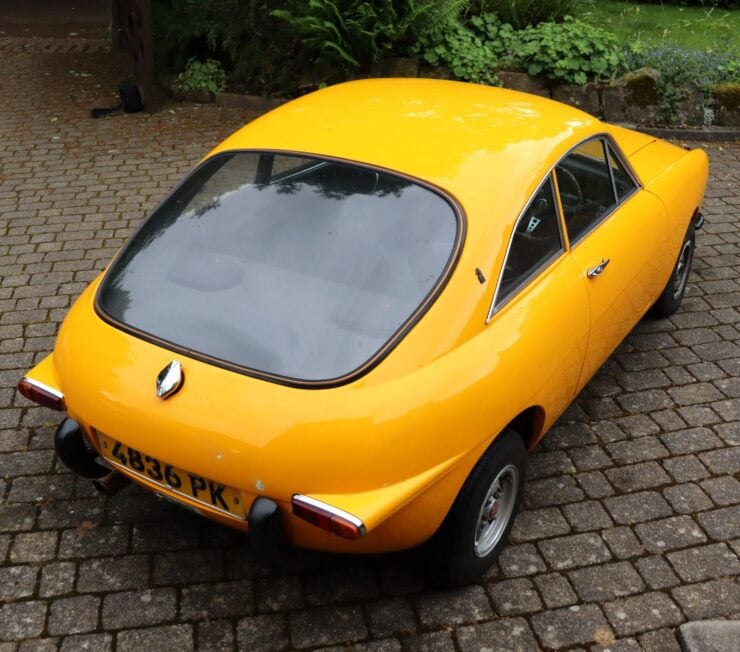

One other benefit to the Mini’s design is that the entire front end including the engine, transmission, suspension, and brakes can be removed and used to power other cars – some have even turned the assembly around and used it to create a twin-engined, all-wheel drive Mini.
Britain’s bustling garatise community quickly embraced the Mini, and the more sporty Mini Cooper. Cars based on either the Mini, the Mini drivetrain, or the Mini platform began springing up including the Broadspeed GT, Mini Marcos, Mini Jem, Radford, Unipower GT, Cox GTM, and the car you see here, the Ogle SX1000.
Of these, the Ogle SX1000 was one of the most comprehensive and certainly one of the most memorable. David Ogle of Ogle Design, already an experienced car designer, penned a sleek new fiberglass body for the car that had a longer wheelbase than the standard Mini, as it was based on the Mini Van platform.
The SX1000 was named for the 1000cc (actually 998cc) engine used, with the “SX” presumably being designed to subtly remind buyers of sex, a common naming convention that persists on production sports cars to the modern day.
Prospective customers who wanted to order an Ogle SX1000 initially had just one option, supply a donor car to Ogle Design who would then build it for them for approximately £550. This wasn’t far off the price of a new Mini Cooper at the time, but despite this there were plenty of takers.
The Switch To Factory Production
After ongoing negotiations with BMC, David Ogle managed to secure a supply of factory-new components for the SX1000 and then for the first time was able to offer brand new cars – the only caveat from BMC was that they couldn’t be branded as “Minis” in any way shape or form.
Buying a brand new SX1000 would set you back £1,190, which was a significant figure at the time, but despite this orders rolled in and the company was producing six of them at week at peak production.
Tragically, David Ogle would be killed in 1962 in a traffic accident while driving an Ogle Mini GT to Brands Hatch circuit where he was going to demonstrate the car.
Ogle SX1000 production would draw to a close shortly thereafter, approximately 66 had been built in total and with some estimates that 40 or so have survived to the modern day.
The Star Wars Connection
After the untimely death of David Ogle his company Ogle Design would survive, in fact it’s still in business today as Ogle Noor with offices in England and Norway. It would be Tom Karen who took over as the firm’s Managing Director and Chief Designer, and helped steer the company through the next 20 years.
In 1970 Ogle Design would design the highly-influential Chopper bicycle for Raleigh, they designed a number of motorcycles including the BSA Rocket 3, and a series of cars including the Scimitar GTE, Bond Bug, and the Reliant Robin.
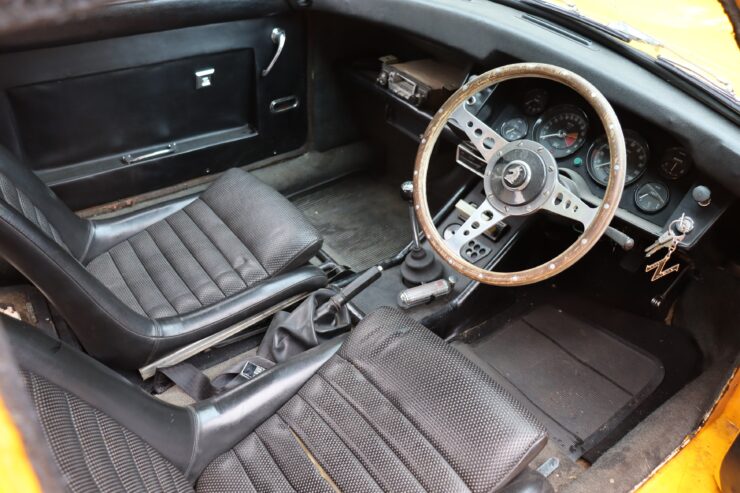

Arguably the company’s most famous creation would be Luke Skywalker’s XP-34 Landspeeder which first appeared in Star Wars: A New Hope. The design of the Landspeeder has been attributed to both special effects artist John Stears and Ogle Design, though it seems that Stears did the original drawings and the team at Ogle Design built it in England.
The XP-34 Landspeeder was actually based on the Bond Bug three-wheeler, a series of special effects including angled mirrors placed underneath were used to hide the wheels and give it the effect of hovering over the landscape.
The 1962 Ogle SX1000 Shown Here
The car you see here is a 1962 Ogle SX1000, it’s just the sixth one that was built, and it’s believed to be the 1962 Ogle New York International Auto Show Car.
This SX1000 is also believed to be the only one fitted with a hood air intake and electric windows, and it has a bored out 1275 Cooper S engine with twin SU carburetors and oil cooler – offering a significant performance upgrade.
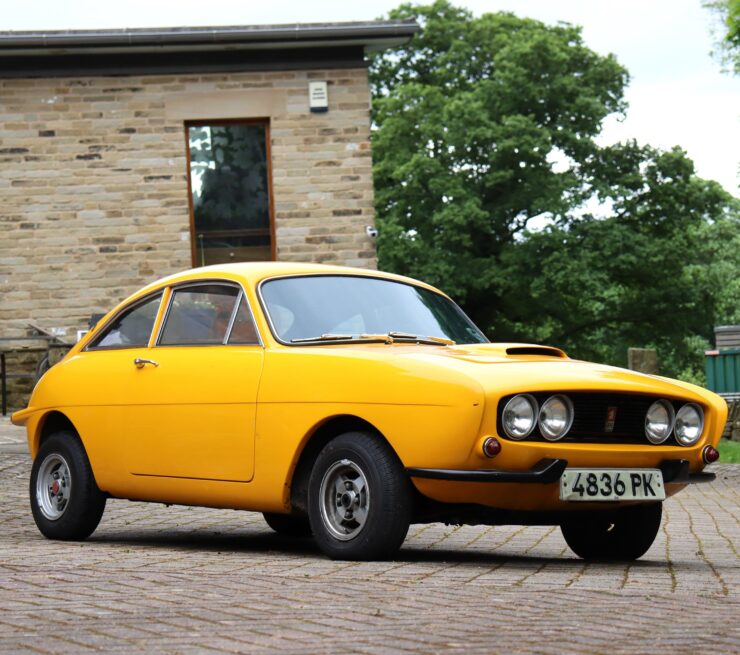

The car was returned to the UK in 2007 by the current owner and now seller. This is one of the most historically significant of the surviving Ogle SX1000s, it’s finished in yellow with alloy wheels over a black vinyl interior.
It’s now due to roll across the auction block with H&H Classics on the 24th of July with a price guide of £15,000 – £18,000 or approximately $19,000 – $22,800 USD. If you’d like to read more about it or register to bid you can visit the listing here.
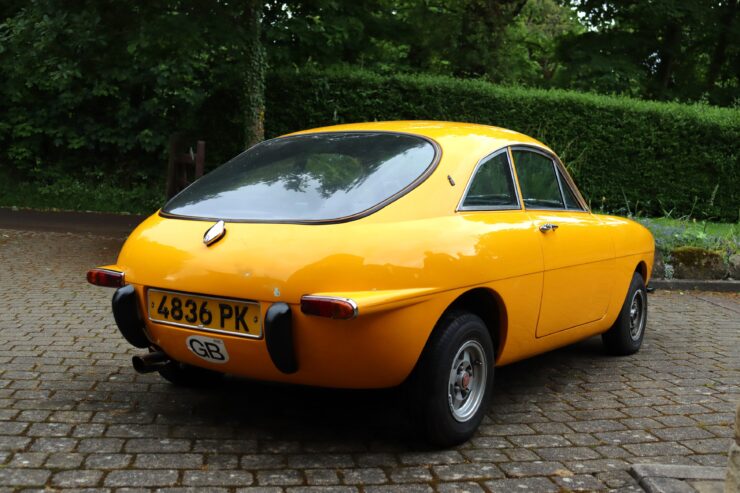
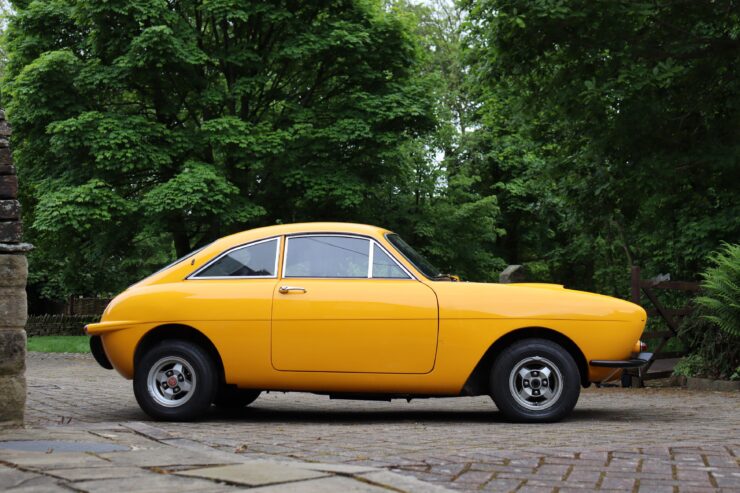
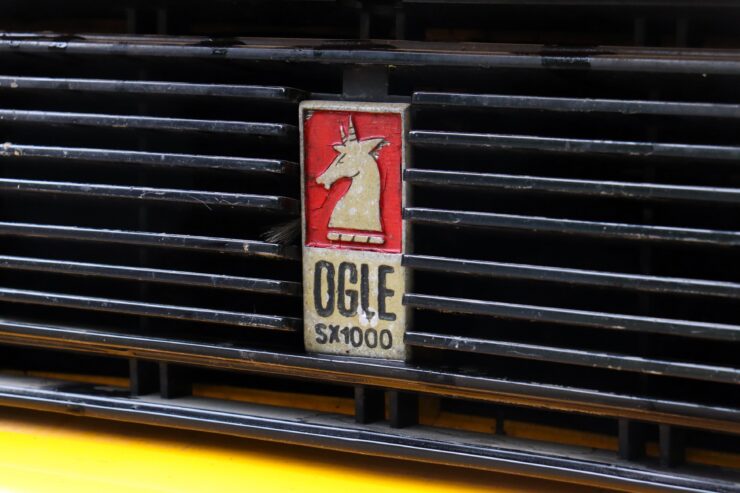
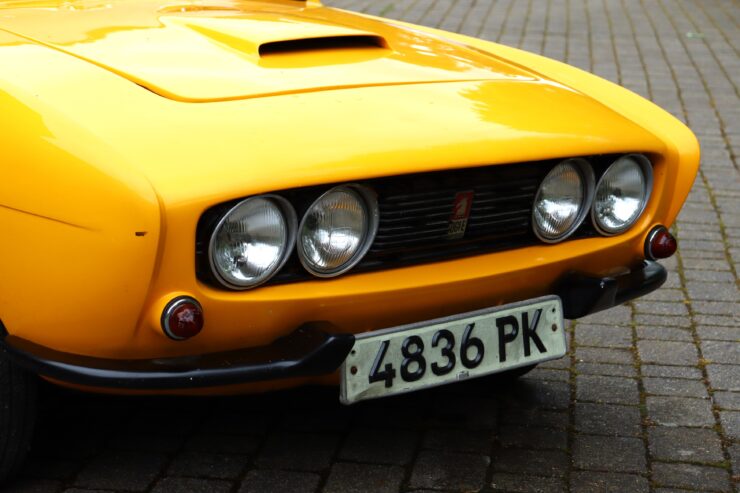
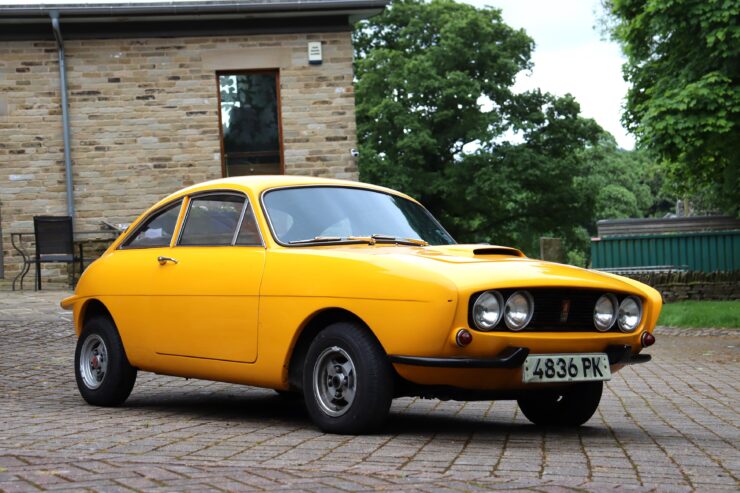
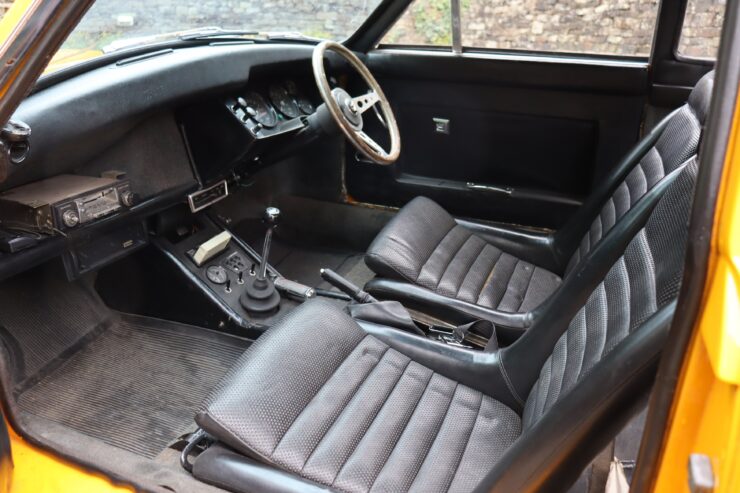
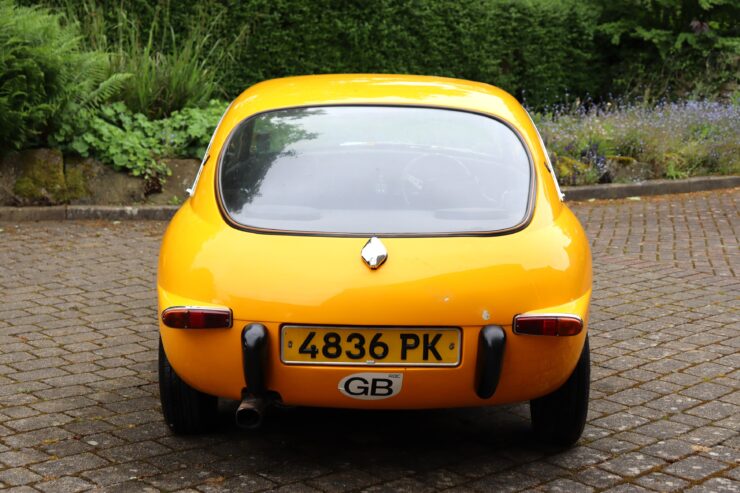
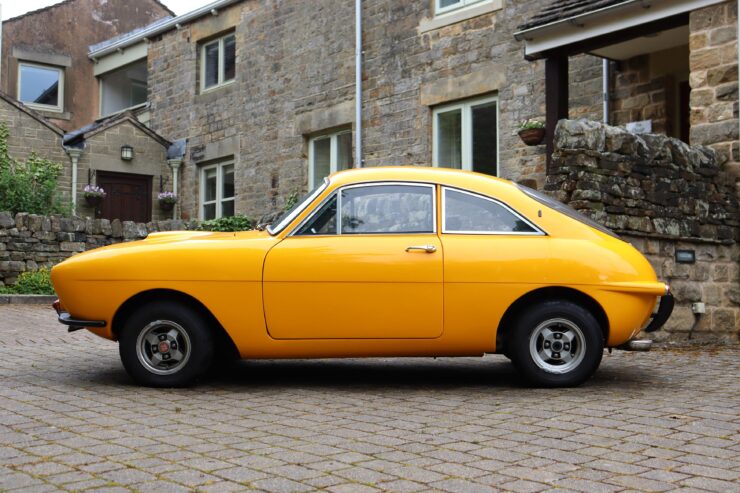
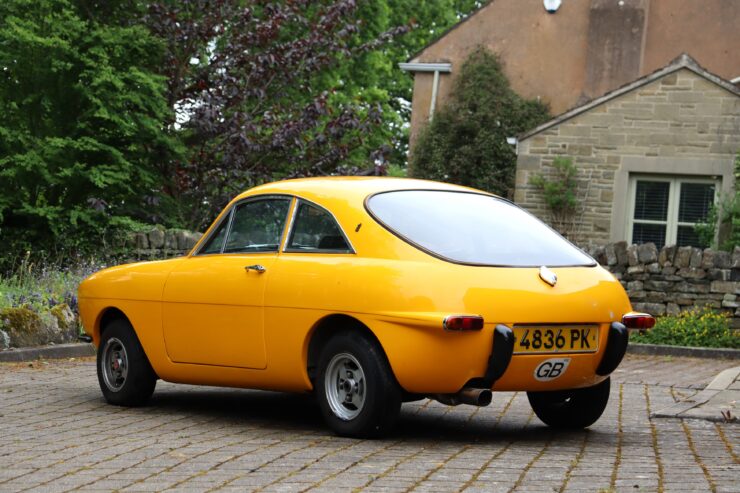
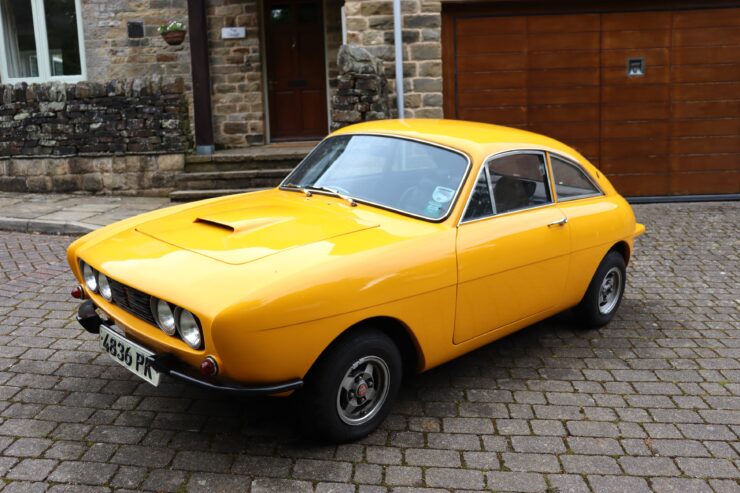
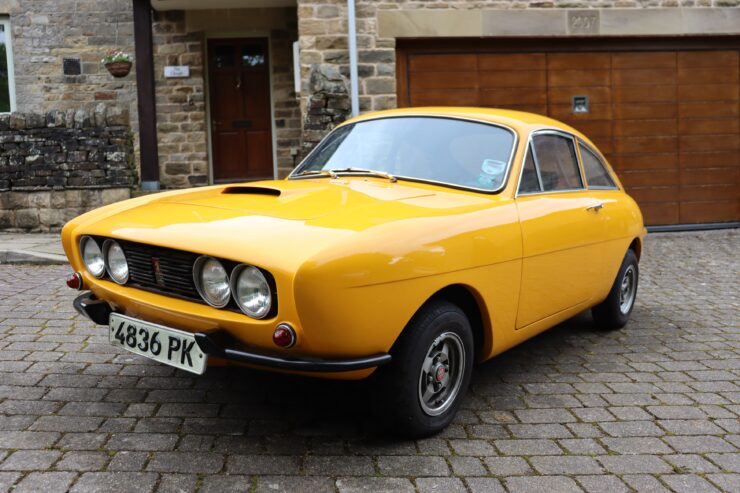
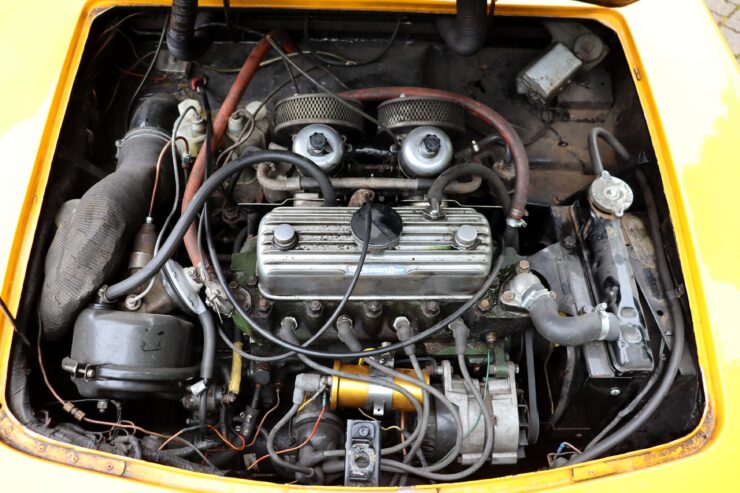
Images courtesy of H&H Classics

